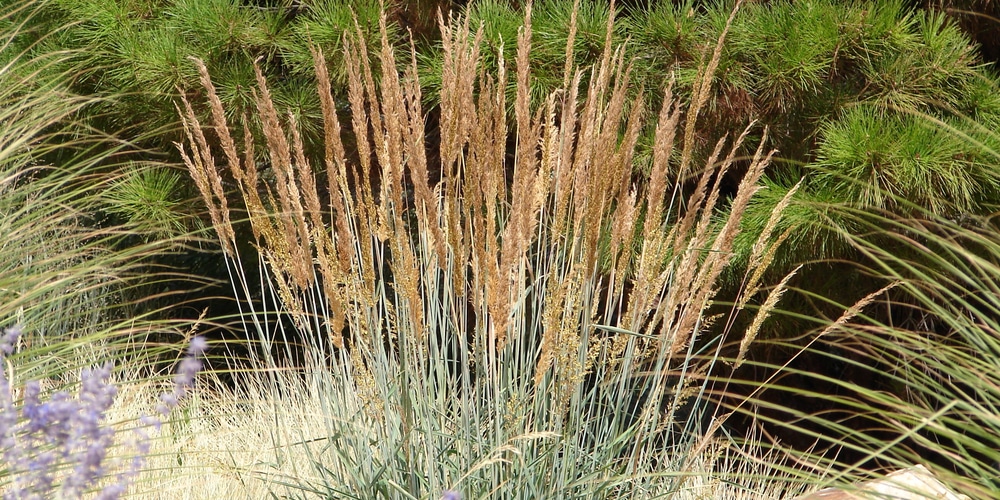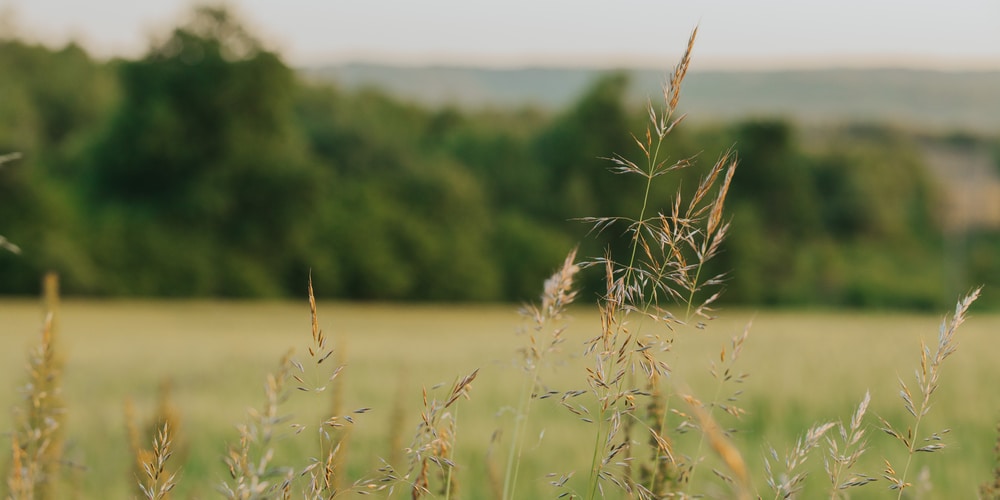Indian grass (Sorghastrum Nutans) has an important place in the history and culture of native American Indians, who used it for a wide variety of purposes. Some tribes considered it sacred and used it to make baskets, mats, and other useful items. The most important use of Indian grass is as food for horses and livestock such as cattle.
Indian grass is a valuable fodder plant because it can be cut and cured without the threat of wilting. It is also drought-resistant and can survive under more dry conditions than other forages such as alfalfa or clover. Let’s look at how to grow and care for Indian Grass.
What is Indian Grass?

Indian grass is known scientifically as ”sorghastrum nutans” it’s a very hardy variety of warm-season grass and can even withstand drought. This is a slender, perennial type of grass that grows up to six feet tall.
The leaves are usually green or blue-green in color and grow in tufts above the base stalk. Indian grass flowers range in color from yellow to bronze, and it blooms between July and September.
Indian grass grows naturally in certain parts of North America, most notably the midwestern region. You will find this type of grass growing in clumps or spread out over large open areas, such as prairies and pastures. It can be grown as an ornamental grass in yards within USDA zones 4 to 9. Indian grass adapts to various soil types but does well in loamy soil with a lot of organic matter. It grows in practically any type of soil except for ones that are too wet.
How to Care for Indian Grass

Indian grass is hardy and easy to care for. It’s also relatively fast-growing and can get quite tall. Before you plant Indian grass:
Give the area a good tilling so that it has plenty of room to grow.
Try planting Indian grass in groups that are at least three feet apart from each other.
After planting, keep the ground moist and wait for your plants to establish themselves before adding fertilizer.
Water your plants regularly and add a two-inch layer of organic mulch around the base to help keep the moisture levels where they should be. This is also important for keeping down the weed population, as well as controlling insect activity. Here are some tips to help you grow and care for Indian grass:
Watering requirements
Indian grass does best when it is watered regularly, though not excessively. It can become quite brittle and dry out quickly if it’s overwatered. Too much water or being grown in waterlogged soil can result in root rot, killing your plant. Water regularly in small amounts. Indian grass is pretty drought-resistant but shouldn’t be neglected, particularly if the weather is hot.
Sunlight needs
Indian grass prefers full sun exposure, at least six hours per day. It can survive in partial shade, but it will grow faster and taller if exposed to the sun’s rays.
Fertilizing
Because Indian grass is a hardy type of plant that grows and flourishes with very little maintenance, you don’t need to add any fertilizer to the soil. It’s best to use organic mulch around the base every growing season to help give your plants nutrients and keep them moist.
Using chemical fertilizer may weaken your plant and make it look leggy.
Temperature
Sorghastrum nutans can survive at almost any temperature that is comfortable for humans. It’s a warm-season grass that grows well in the spring and summer months and will become dormant in the winter. This variety of grass likes temperatures of 85 to 95 F but will grow well as long as the temperature is over 60F.
In the winter, it’s fairly hardy and will tolerate temperatures as low as -30 degrees Fahrenheit, though the plants will die back with prolonged exposure to these conditions.
Soil requirements
Indian grass thrives in various soil types as long as they have good drainage and aren’t too wet. The pH levels should be neutral, acid, or alkaline.
Diseases and pests
There are very few diseases or pests that affect Indian grass. If you notice any infestations, remove the affected plants immediately. Indian grass is susceptible to fungal diseases such as rust and leaf spot and can be attacked by insects like spittlebugs, spider mites, and aphids. You can use neem oil on your plant if an insect infestation occurs.
Fungicidal sprays will help kill fungal infections, but you should also ensure your ornamental grasses aren’t overcrowded or overwatered to reduce the spread of fungal spores. Birds like to peck at Indian grass seeds, which can decrease your harvest.
Propagation
Indian grass is very easy to propagate. Simply collect the seeds in the fall and plant them in a well-ventilated area, such as a garage or greenhouse in the early spring. Once the seeds have germinated, they can then be transferred to an outdoor location.
You can also divide your existing plants by digging up unwanted clusters. However, Indian grass has sprawling root systems which are deep and hard to separate, so growing a new plant from seed is probably your best option.
Pruning
You don’t need to do any pruning for Indian grass, as it naturally grows in a clump that is the same height all around. After your plants establish themselves, you can cut them back if you want. If they are kept long, they will resemble ornamental grasses and provide a nice backdrop to other plants.
Conclusion
Overall, Indian grass is a low-maintenance plant that can provide you with visual interest if you want to establish an informal meadow in your yard. It typically doesn’t need much attention to keep it healthy and growing well, making it the ideal choice for novice gardeners or those who simply don’t have time to spend on their landscaping.
This grass is an excellent choice for any area that needs permanent low-maintenance landscaping. You might need to do some extra weeding after planting, but after that, this is one of the easiest plants you will ever care for. It tolerates drought and heavy rainfall, so it can survive in harsh environments.